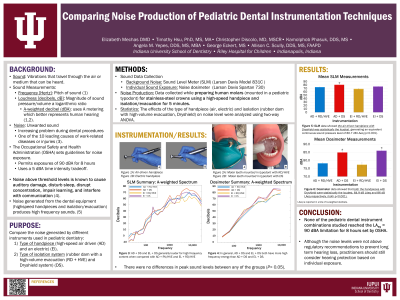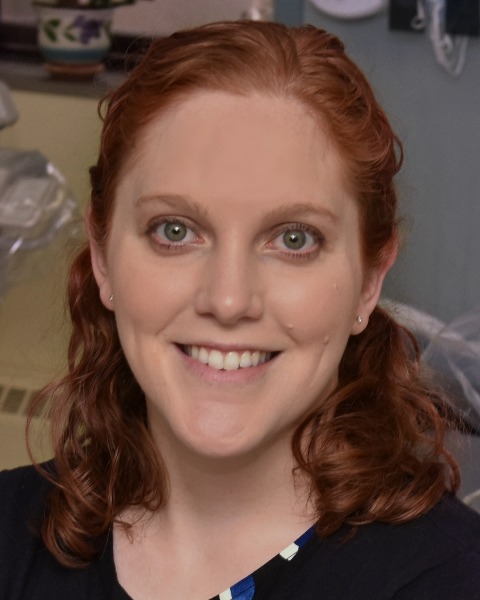Other
105 - Comparing Noise Production of Pediatric Dental Instrumentation Techniques

.jpg)
Elizabeth J. Mechas, DMD (she/her/hers)
Pediatric Dental Resident
Indiana University/Riley Children's Hospital
Indiana University School of Dentistry and Riley Hospital for Children
Indianapolis, Indiana, United States- CD
Christopher Discolo, MD, MSCR
Riley Children's Hospital
- KP
Kamolphob Phasuk, DDS, MS
Indiana University School of Dentistry
- AY
Angela Yepes, DDS, MS
Indiana University School of Dentistry
- TH
Timothy Hsu, PhD, MS, MA
IUPUI

Allison C. Scully, DDS, MS, FAAPD
Assistant Professor
Riley Children's Hospital/Indiana University
Indiana University
Indianapolis, Indiana, United States- LV
LaQuia A. Vinson, DDS, MPH
Associate Professor
Indiana University, Bloomington, IN
Indianapolis, Indiana, United States
Presenting Author(s)
Co-Author(s)
Research Mentor(s)
Program Director(s)
Purpose: Noise in the dental setting has short-and long-term detrimental effects. The purpose of this study was to compare the noise generated by different instruments used in pediatric dentistry: type of handpiece (high-speed air driven and an electric), and type of isolation system (rubber dam with a high-volume evacuation and Dryshield system).
Methods: Data was collected using a sound level meter (SLM) to analyze background sound and a noise dosimeter to measure individual sound exposure. The data was collected while preparing human molars for stainless-steel crowns using a high-speed handpiece and isolation/evacuation for 5 minutes. The effects of the type of handpiece (air, electric) and isolation (rubber dam with high-speed evacuation, Dryshield) on noise level was analyzed using two-way ANOVA.
Results: SLM data showed the air driven handpiece with Dryshield was statistically the loudest, generating an equivalent continuous sound pressure level (LAeq) of 80.7 (dBA) (P < 0.001). The dosimeter data showed that both the air driven handpiece with Dryshield and the electric handpiece with Dryshield were statistically the loudest, LAeq of 84.9 (dBA) and 86 (dBA) respectively (P < 0.001 and P < 0.001). There were no differences in peak sound levels between any of the groups (P> 0.05).
Conclusion: None of the pediatric dental instrument combinations studied reached the LAeq= 90 dBA limitation for 8 hours set by the department of Occupational Safety and Health Administration Standards. Although the noise levels were not above regulatory recommendations to prevent long term hearing loss, practitioners should still consider hearing protection based on individual exposure.
Identify Supporting Agency and Grant Number: Indiana University Graduate Research Committee

.jpg)